Volunteers watch over Florida scrub jay population in Wabasso Scrub Conservation Area
INDIAN RIVER COUNTY − In a scene reminiscent of "Snow White and the Seven Dwarfs," Monica Folk, an endangered species biologist hired by the county, walked along a sandy path as Florida scrub jays flew above her head, seemingly acknowledging their trusty ally.
Folk imitated the sharp, scratchy rapping of a scrub jay to a group of five volunteers, who had come out to the 111-acre Wabasso Scrub Conservation Area at 8900 64th Ave., to monitor eight scrub jay families.
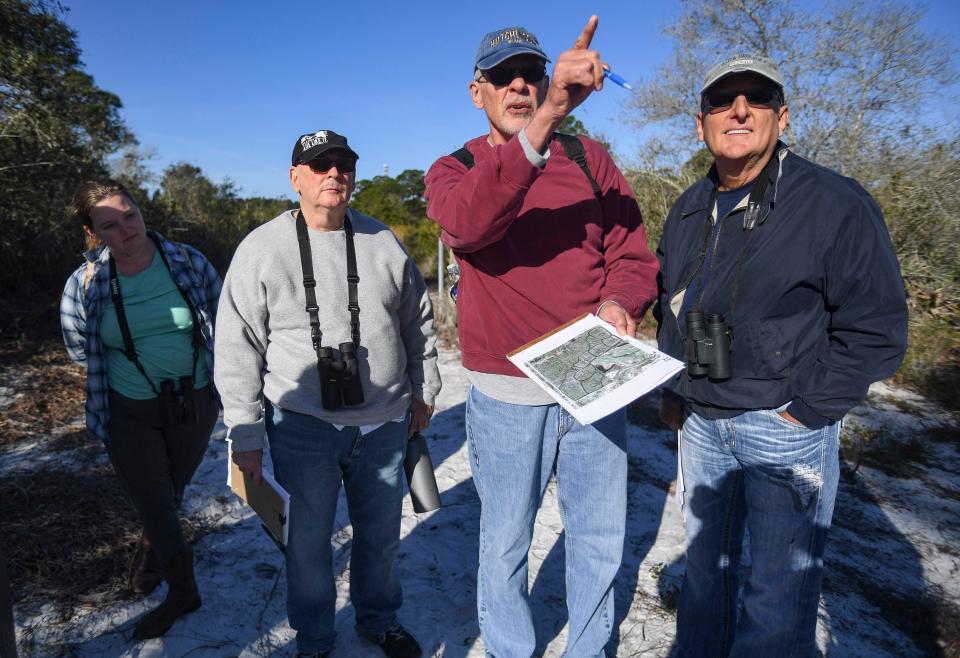
The volunteers are listed on Folk’s federal recovery permit, authorizing them to condition the birds and collect scientific information. The volunteers must be trained and authorized by Folk and carry a letter of delegation in the field.
They're authorized to call to the jays by mimicking the sound of their native calls and to throw raw, salt-free peanuts to them that have the same nut protein jays normally consume, so they can get a closer look at the jays' bands on their legs that are specific to their family group and organized by color.
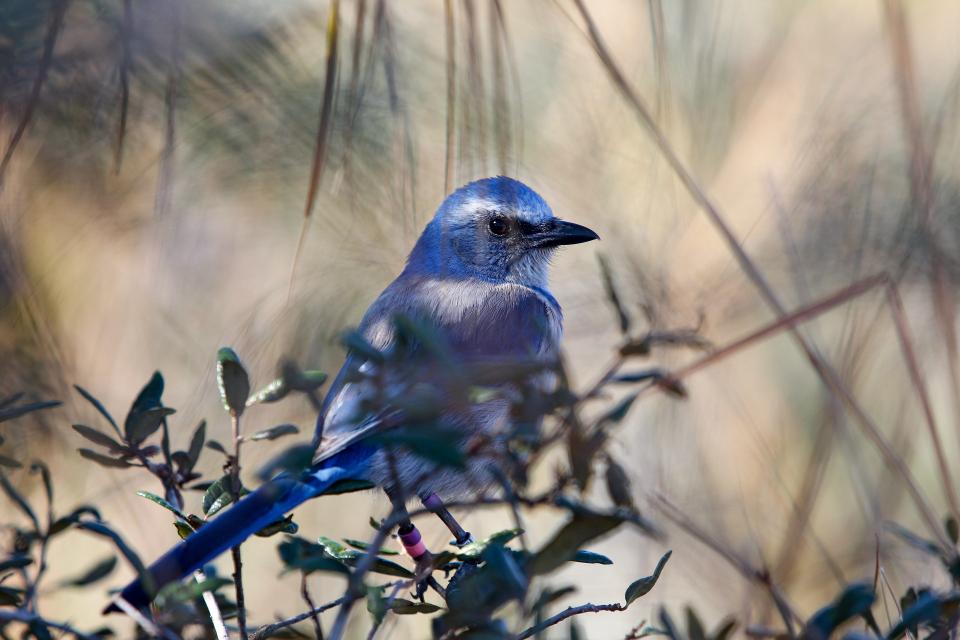
This type of conditioning is only done during the months of June through February, so that there is no interference with nesting season.
The Florida scrub jay was listed as a threatened federal species by the U.S. Fish and Wildlife Service in 1987 and it is protected by the Federal Endangered Species Act. The species has steadily declined in numbers because of their vulnerability of habitat with development across the state.
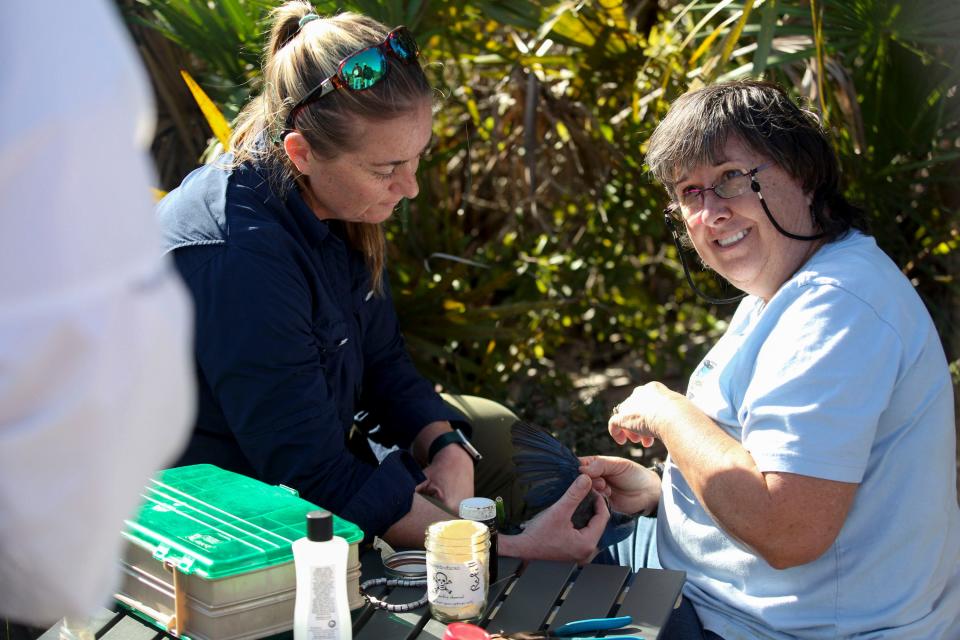
Originally, 39 of 67 counties in Florida were home to the scrub jay. Today, only nine counties have more than 30 family groups on conservation lands, according to Folk.
The local volunteers carefully collected data on the banded scrub jay families, checking nearby pine trees to insure there are no predators, like hawks, nearby, before calling for them.
The group followed the white, sandy trail through the conservation area, stopping to make observations at each territory marked as a “conditioning station” on their provided map.
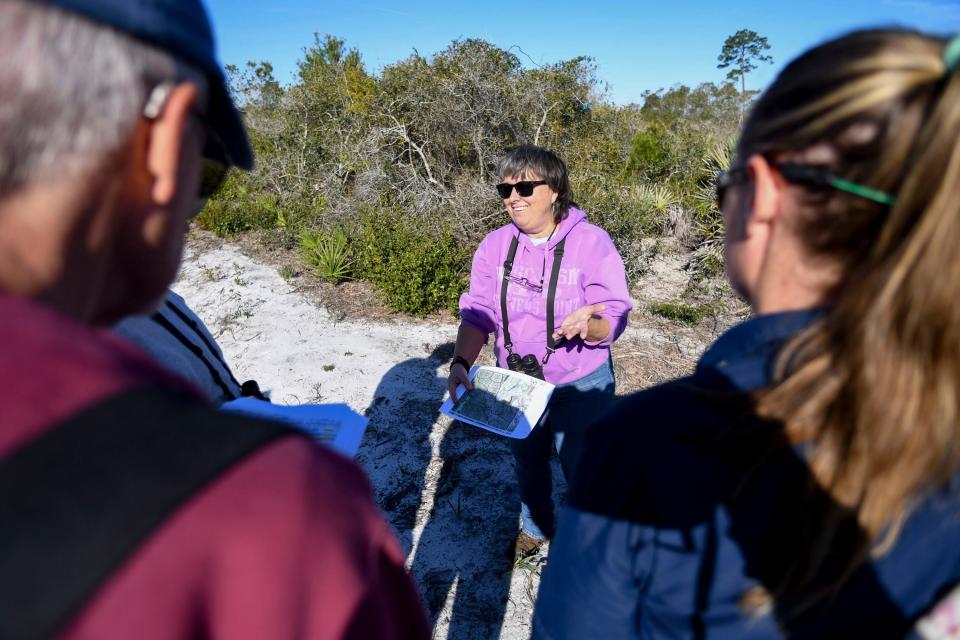
Volunteers are supplied with information about the birds, including how many birds are in each family and the bands that are unique to each. For one territory, as volunteers counted the scrub jays, they observed that one family member was missing.
After about 10 minutes, the missing bird swooped down next to the rest of its family.
“I just got goosebumps all over,” said Jim Miller, a volunteer from North Hutchinson Island. “This is why we retired here −to be able to do stuff like this. It's exciting.”
In 2000, Indian River County became the first in the world to apply for and receive an incidental take permit (ITP) from the U.S. Fish and Wildlife Service to take scrub jays' habitat for economic development, Folk explained.
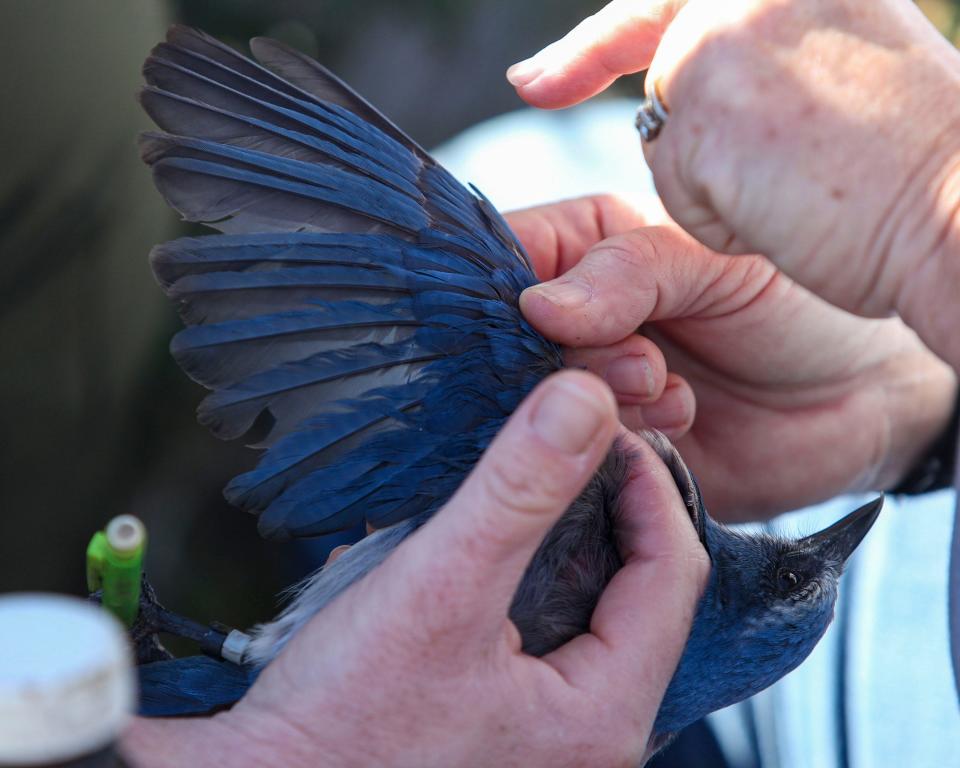
“The requirements to get an incidental take permit at that scale ... is that you have to write a Comprehensive Habitat Conservation Plan,” Folk said. “Basically, you propose what you are going to give in exchange for what you are going to take.”
In exchange for the lots that Indian River County planned for development, the county and the city of Sebastian proposed to buy seven conservation areas that are for Florida scrub jays, specifically, and have extra requirements to keep the habitat in a state that the jays need to live.
Today, of the seven family groups the county lost with the permit, about 40 family groups have grown on these conservation areas.
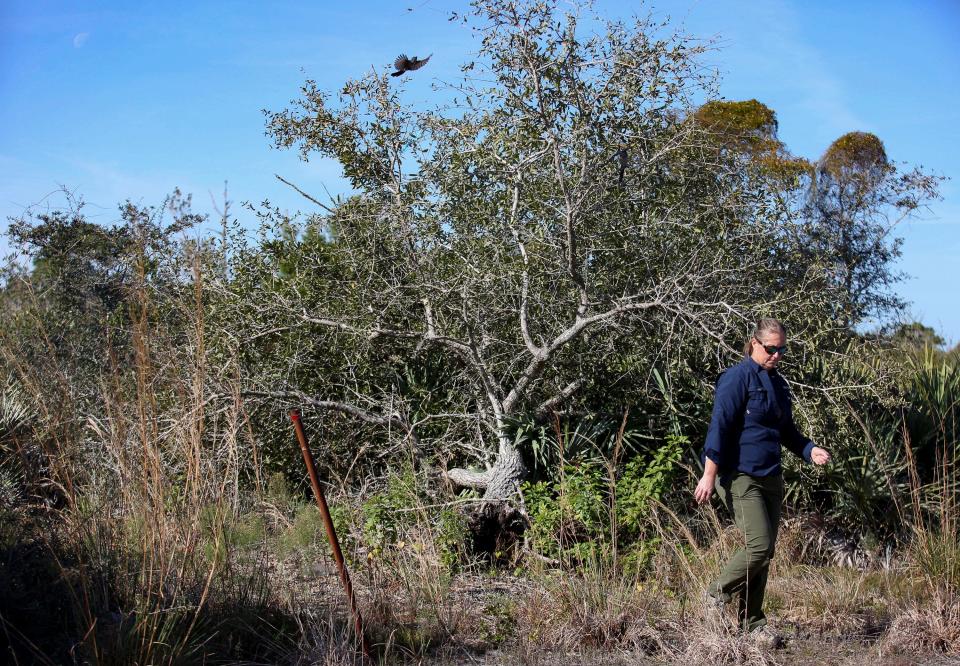
"The 40 groups on those seven conservation areas are probably the most that we can ever support," Folk said. "The physical amount of space that we have cannot support any more than that. Every square inch of suitable habitat is occupied in our county.”
The single species conservation program areas include North Sebastian Conservation Area and the Wabasso Scrub Conservation Area.
It took about seven or eight years for the first birds to show up at the conservation area, because it took that long to get the habitat ready for them, Folk said.
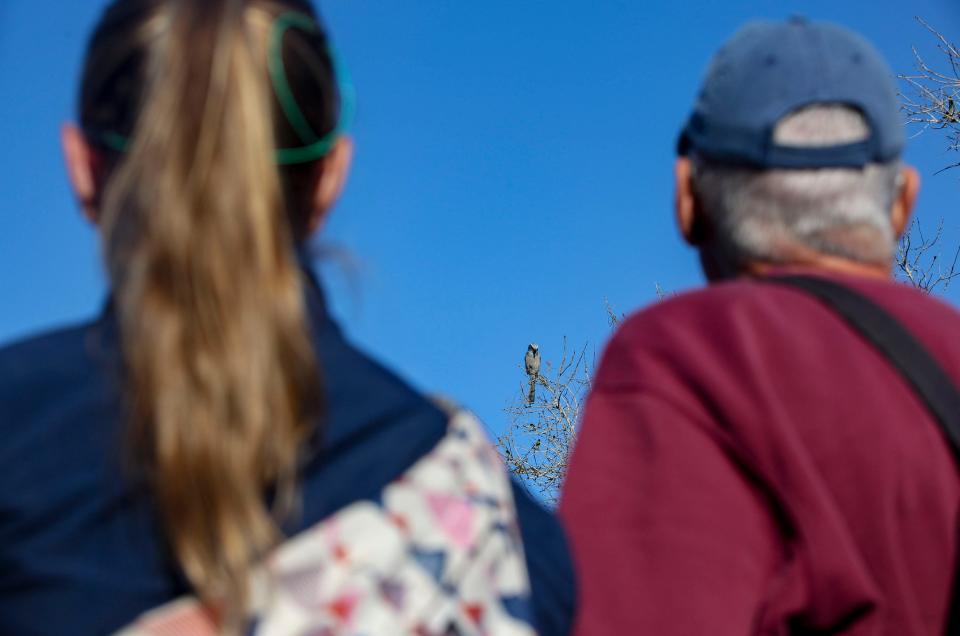
“(The county) has far exceeded the commitment of the ITP and (volunteers) could actually quit monitoring at any time,” Folk said. “But, at this point, they value so much understanding on how to manage that habitat and maximizing it, that they’re going to keep monitoring until the 30-year period and permit expires."
All banding, marking, and sampling is being conducted under a federally authorized Bird Banding Permit issued by the U.S Geological Survey’s Bird Banding Lab.
What a Breeze: One year after flying into Vero Beach, Breeze Airways continues setting passenger records
Convicted: Vero Beach man convicted in 2018 fatal shooting outside a Motel 6, east of I-95
Shaking: How many earthquakes have been felt on the Treasure Coast? More than one
Kaila Jones is a visuals journalist for TCPalm and Treasure Coast Newspapers. You can reach her at kaila.jones@tcpalm.com.
This article originally appeared on Treasure Coast Newspapers: Volunteers keep Indian River County's scrub jay population in check

